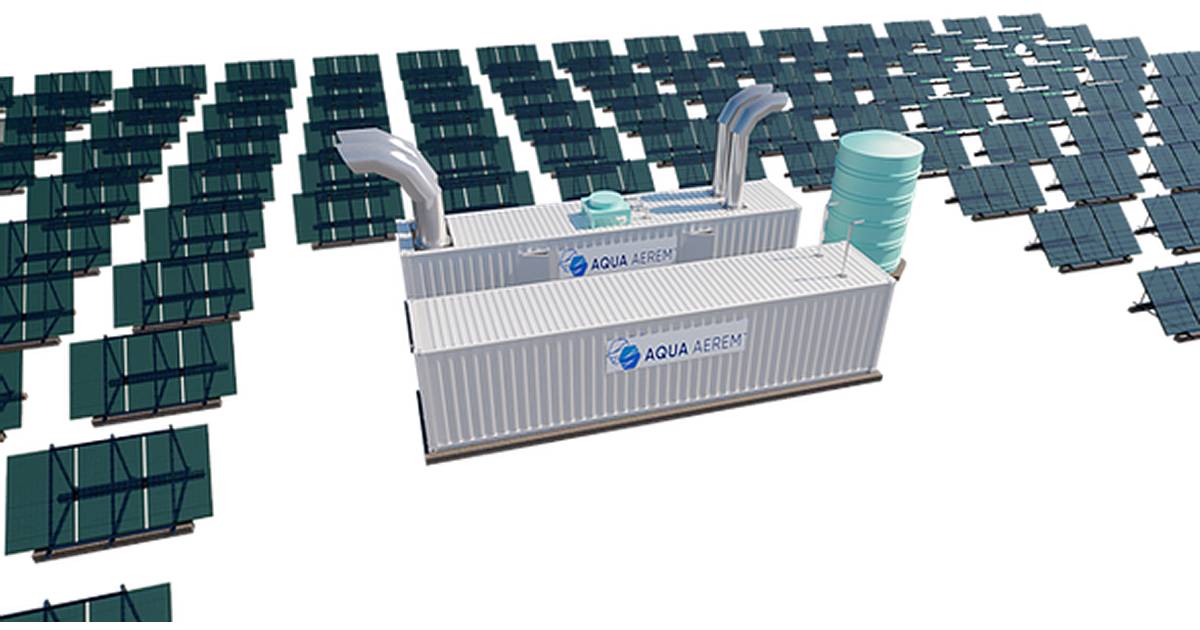This one is a bit of a head scratcher – a proposed project for the Northern Territory seeks to use solar power to pull water from the air and create hydrogen from that water to be used for electricity generation.
The Northern Territory Government yesterday announced the first step in a proposed off grid renewable hydrogen project to occur at Tennant Creek. A joint venture between Axcentium and Ahurei, it involves the trial of the pair’s Aqua Aerem technology.
“Aqua Aerem’s patented water capture technology demonstrated today when combined with electrolysers has the potential to allow the Northern Territory to realise its 2050 carbon emission targets through the use of green hydrogen, whilst creating a future lucrative export market in renewable energy,” said Aqua Aerem co-founder, Gerard Reiter.
We’ve written about extracting water from air using solar energy before – an example being the Source Hydropanel, which is in use a number of remote communities in Australia for supplying safe drinking water. But this is taking things to a very different level.
The project would involve concentrator photovoltaic (CPV), which Aqua Aerem says will offer the stable power generation through the daytime preferable for driving water electrolysis in a cost-effective manner. They have proposed a 15MW electrolyser which they state would produce 912 tonnes of green hydrogen per annum for Territory Generation’s Tennant Creek Power Station , and provide around 50 percent of the energy for the town’s 3,000 people.
A first step towards all this is a trial to commence in March that will run over 12 weeks collecting local production data for further optimisation of the water capture process.
How Much Water Is Needed To Create 1kg Of Hydrogen?
According to this, to produce 1 kg of hydrogen, nine times the amount of water is necessary – so 912,000 kilograms of hydrogen = 8,208,000 litres of water a year. It’s a lot of water. A standard Olympic-size swimming pool contains 2,500,000 litres of the stuff. And Tennant Creek isn’t particularly humid at any time of the year.
How Much Energy Is Required To Produce 1kg Of Hydrogen?
The same web site indicates 55 kWh of electrical energy is required to create 1kg of hydrogen at an assumed rate of efficiency of > 60 percent. Based on that, 912,000 kg of hydrogen = 50,160,000 kilowatt hours – 50.16 gigawatt hours, annually. It’s a lot of electricity, but Tennant Creek has plenty of sunshine to provide it.
Why Not Cut Out Some Complexity?
However, it raises the question – instead of such a complex process with inefficiencies across the multiple steps – wouldn’t it just be cheaper, easier and more efficient to combine solar + battery storage? It’s a genuine question – I really don’t know.
While there’s an electricity generation asset to burn the hydrogen already in place nearby (Tennant Creek Power Station), there would need to be upgrades and adjustments made to the plant and processes for it to do so – it’s not just a matter of switching fuels.
Perhaps it would also be cheaper just to buy the water. But fresh water is undervalued and, in this scenario, could be considered a waste of the precious liquid given the location.
Anyway, there’s a lot of information about this technology yet to be revealed – including costs.
Aqua Aerem says it is working closely with the Australian Renewable Energy Agency (ARENA) on funding for its renewable hydrogen project. ARENA provides grants; so here’s hoping the agency does its due diligence very diligently when considering handing out free taxpayer cash for this.
But depending on the results of this initial step, perhaps it’s where the venture could end.


 RSS - Posts
RSS - Posts



Speak Your Mind